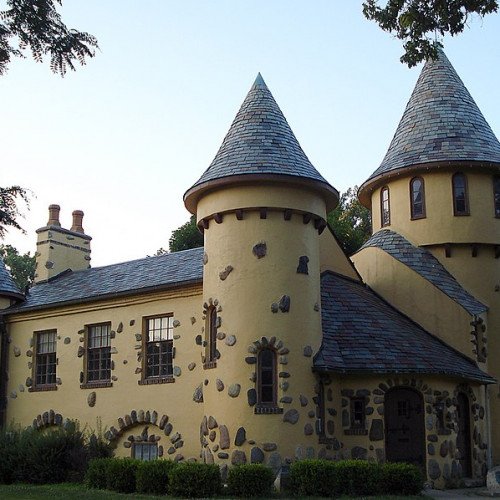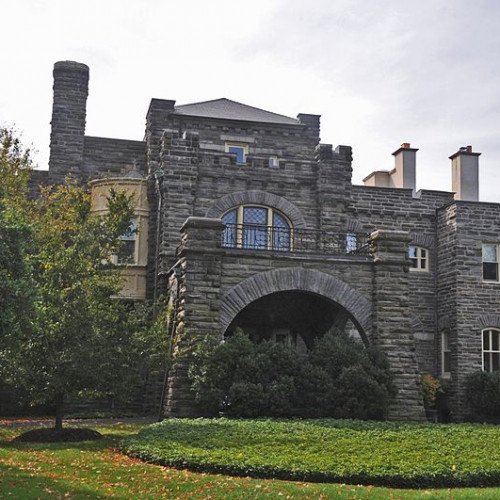Castles of "United States" CURWOOD CASTLE vs DRUIM MOIR CASTLE

CURWOOD CASTLE
Curwood Castle is a small castle, now a museum, located in Owosso, Michigan, built by author James Oliver Curwood. James Curwood was born in Owosso in 1878. He spent much of his early life out of doors, and at a young age left to tour the South on a bicycle. He eventually returned to Michigan, attended the University of Michigan for two years, and went to work as a reporter and later editor on at the Detroit Tribune. In 1907, Curwood returned to Owosso to focus on writing, and the next year published his first novel. In 1922, Curwood built this replica of a Norman chateau along the banks of the Shiawassee River near his home in Owosso. Construction on the building began in 1922 and was completed in 1923. Curwood moved in and used one of the turrets as a writing studio. Curwood later became a zealous conservationist, and was appointed to the Michigan Conservation Commission in 1926. He died a year later at age 49. In his will, the castle was given to the City of Owosso. It has served in various capacities over the years and is now a museum operated by the city, and is open to the public. Each year, the castle hosts the Curwood Festival. The event celebrates the life and works of James Oliver Curwood.
Statistics for this Xoptio

DRUIM MOIR CASTLE
Druim Moir, also known as the Houston Estate Historic District, is a historic district in the Chestnut Hill neighborhood of Philadelphia, Pennsylvania. Druim Moir was added to the National Register of Historic Places in 1979. It is a contributing property of the Chestnut Hill National Historic District.[2] "Druim Moir" means Great Ridge in Scottish Gaelic. The centerpiece of the historic district is Druim Moir Castle (1885–86), whose main gate is at the corner of Willow Grove Avenue and Cherokee Street. Designed by architects G. W. & W. D. Hewitt, and built at a cost of over $115,000 for Henry H. Houston, the thirty-room home was the largest in its neighborhood. Local Wissahickon schist was used for the walls, Eastern granite for the trim, and slate for the roof. The interior is notable for its variety of woods: oak for the hall and stairway, butternut walnut for the parlor, mahogany for the reception room, quartered oak in the dining room and library, sycamore for the office, and cypress for the servant's section. Oak, cherry, and sycamore were used on the second floor, and white pine for the third-floor servants' quarters. Houston was the largest landowner in Philadelphia in the 1880s. He earned his wealth as the freight manager of the Pennsylvania Railroad, as well as from gold mining, shipping, and petroleum products. Houston also developed the neighborhood of over 80 homes known as Wissahickon Heights that surrounds Druim Moir. Nearby Brinkwood, a Shingle-style residence, was a wedding present from Houston to his son, Samuel F. Houston, in 1887. The gardens were altered in 1920-1921 by Robert Rodes McGoodwin for Samuel F. Houston. In 1952, the house was modified by the removal of the top story and towers. In addition to the eponymous castle and Brinkwood, the historic district comprises five other contributing properties and eight non-contributing properties.